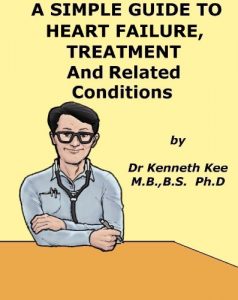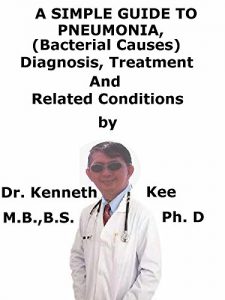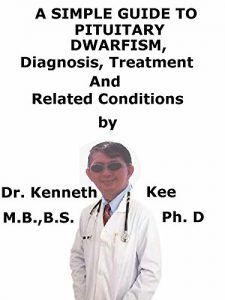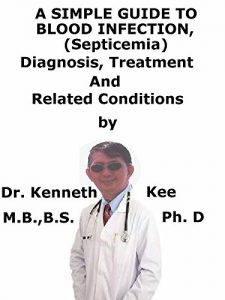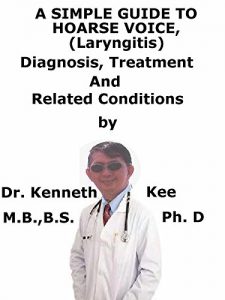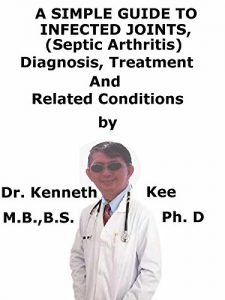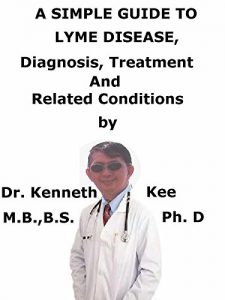Introduction
Ode to Heart Failure
Heart Failure occurs when the heart fails to function properly
The heart keeps up with the flowing blood volume poorly
As a result the heart beats rapidly or irregularly
Blood is dammed up in the lungs or as edema in the feet
There is breathlessness, fatigue and heart enlargement
An echocardiogram will show the heart blood movement
Chest x-rays may show in the lungs fluid congestion
In severe heart failure it is wise to reduce physical exertion
Treatment is diet limitation of salt and fat and adequate rest
To reduce the water retention and narrowing of blood vessel
Medication eliminates water retention and strengthens the heart pumping
Help the heart beat more efficiently and prevents blood clotting
The medicines open up the blood vessel and slow the heart rate
If there is no improvement, surgery may be indicated
A coronary artery bypass or the ballooning of the narrow artery part
Finally a heart transplant may be required for a severe failing heart
-An original poem by Kenneth Kee
Interesting Tips about the Heart Failure
A Healthy Lifestyle
1. Take a well Balanced Diet
2. Keep active walking or riding a stationary bicycle.
Avoid exercise on days when there is increased fluid or weight.
a. Lose weight if overweight.
b. Rest is needed for the heart
Medicines treat the symptoms, prevent the heart failure from getting worse, and prolong life
Medicines like diuretics, potassium, aspirin and digoxin will:
a. Help the heart muscle pump better
b. Keep the blood from clotting
c. Open up the blood vessels or slow the heart rate
d. Replace potassium
e. Rid your body of excess fluid and salt (sodium)
Surgery:
a. Coronary bypass surgery (CABG) and angioplasty may help improve blood flow to the damaged or weakened heart muscle.
b. Heart valve surgery may be done if damages to the heart valve are causing heart failure.
c. A pacemaker can help treat slow heart rates or help both sides of the heart contract at the same time.
d. A defibrillator sends an electrical pulse to stop life threatening abnormal heart rhythms.
3. Keep bones and body strong
Bone marrow produces our blood
Eat foods rich in calcium like yogurt, cheese, milk, and dark green vegetables.
Eat foods rich in Vitamin D, like eggs, fatty fish, cereal, and fortified milk.
Eat food rich in Vitamins B and C such as green vegetables and fruits
Zinc and other minerals are important to the body
4. Get enough rest and Sleep
Avoid stress and tension
5. Exercise and stay active.
It is best to do weight-bearing exercise such as walking, jogging, stair climbing, dancing, or lifting weights for 2½ hours a week.
One way to do this is to be active 30 minutes a day at least 5 days a week.
Begin slowly especially if a person has not been active.
6. Do not drink more than 2 alcohol drinks a day for a man or 1 alcohol drink a day for a woman.
Alcohol use also increases the chance of falling and breaking a bone.
Alcohol can affect the neurons and brain cells.
7. Stop or do not begin smoking.
It also interferes with blood supply and healing.
Cigarettes contain more than forty types of hazardous and possibly cancer causing chemicals which can harm the smokers and those around them
Chapter 1
Heart Failure
Congestive Heart failure occurs when the heart can not pump enough blood to the rest of the body.
This condition may affect either the right side or the left side of the heart.
Often both sides of the heart are involved.
When the heart is unable to pump enough oxygen-rich blood out to the rest of the body, the blood may back up in other areas of the body.
Fluid builds up in the lungs, liver, gastrointestinal tract, and the arms and legs.
This is called congestive heart failure.
TABLE OF CONTENT
Introduction
Chapter 1 Heart Failure
Chapter 2 Interesting Facts of Heart Failure
Chapter 3 Treatment of Heart Fa
Ode to Heart Failure
Heart Failure occurs when the heart fails to function properly
The heart keeps up with the flowing blood volume poorly
As a result the heart beats rapidly or irregularly
Blood is dammed up in the lungs or as edema in the feet
There is breathlessness, fatigue and heart enlargement
An echocardiogram will show the heart blood movement
Chest x-rays may show in the lungs fluid congestion
In severe heart failure it is wise to reduce physical exertion
Treatment is diet limitation of salt and fat and adequate rest
To reduce the water retention and narrowing of blood vessel
Medication eliminates water retention and strengthens the heart pumping
Help the heart beat more efficiently and prevents blood clotting
The medicines open up the blood vessel and slow the heart rate
If there is no improvement, surgery may be indicated
A coronary artery bypass or the ballooning of the narrow artery part
Finally a heart transplant may be required for a severe failing heart
-An original poem by Kenneth Kee
Interesting Tips about the Heart Failure
A Healthy Lifestyle
1. Take a well Balanced Diet
2. Keep active walking or riding a stationary bicycle.
Avoid exercise on days when there is increased fluid or weight.
a. Lose weight if overweight.
b. Rest is needed for the heart
Medicines treat the symptoms, prevent the heart failure from getting worse, and prolong life
Medicines like diuretics, potassium, aspirin and digoxin will:
a. Help the heart muscle pump better
b. Keep the blood from clotting
c. Open up the blood vessels or slow the heart rate
d. Replace potassium
e. Rid your body of excess fluid and salt (sodium)
Surgery:
a. Coronary bypass surgery (CABG) and angioplasty may help improve blood flow to the damaged or weakened heart muscle.
b. Heart valve surgery may be done if damages to the heart valve are causing heart failure.
c. A pacemaker can help treat slow heart rates or help both sides of the heart contract at the same time.
d. A defibrillator sends an electrical pulse to stop life threatening abnormal heart rhythms.
3. Keep bones and body strong
Bone marrow produces our blood
Eat foods rich in calcium like yogurt, cheese, milk, and dark green vegetables.
Eat foods rich in Vitamin D, like eggs, fatty fish, cereal, and fortified milk.
Eat food rich in Vitamins B and C such as green vegetables and fruits
Zinc and other minerals are important to the body
4. Get enough rest and Sleep
Avoid stress and tension
5. Exercise and stay active.
It is best to do weight-bearing exercise such as walking, jogging, stair climbing, dancing, or lifting weights for 2½ hours a week.
One way to do this is to be active 30 minutes a day at least 5 days a week.
Begin slowly especially if a person has not been active.
6. Do not drink more than 2 alcohol drinks a day for a man or 1 alcohol drink a day for a woman.
Alcohol use also increases the chance of falling and breaking a bone.
Alcohol can affect the neurons and brain cells.
7. Stop or do not begin smoking.
It also interferes with blood supply and healing.
Cigarettes contain more than forty types of hazardous and possibly cancer causing chemicals which can harm the smokers and those around them
Chapter 1
Heart Failure
Congestive Heart failure occurs when the heart can not pump enough blood to the rest of the body.
This condition may affect either the right side or the left side of the heart.
Often both sides of the heart are involved.
When the heart is unable to pump enough oxygen-rich blood out to the rest of the body, the blood may back up in other areas of the body.
Fluid builds up in the lungs, liver, gastrointestinal tract, and the arms and legs.
This is called congestive heart failure.
TABLE OF CONTENT
Introduction
Chapter 1 Heart Failure
Chapter 2 Interesting Facts of Heart Failure
Chapter 3 Treatment of Heart Fa
